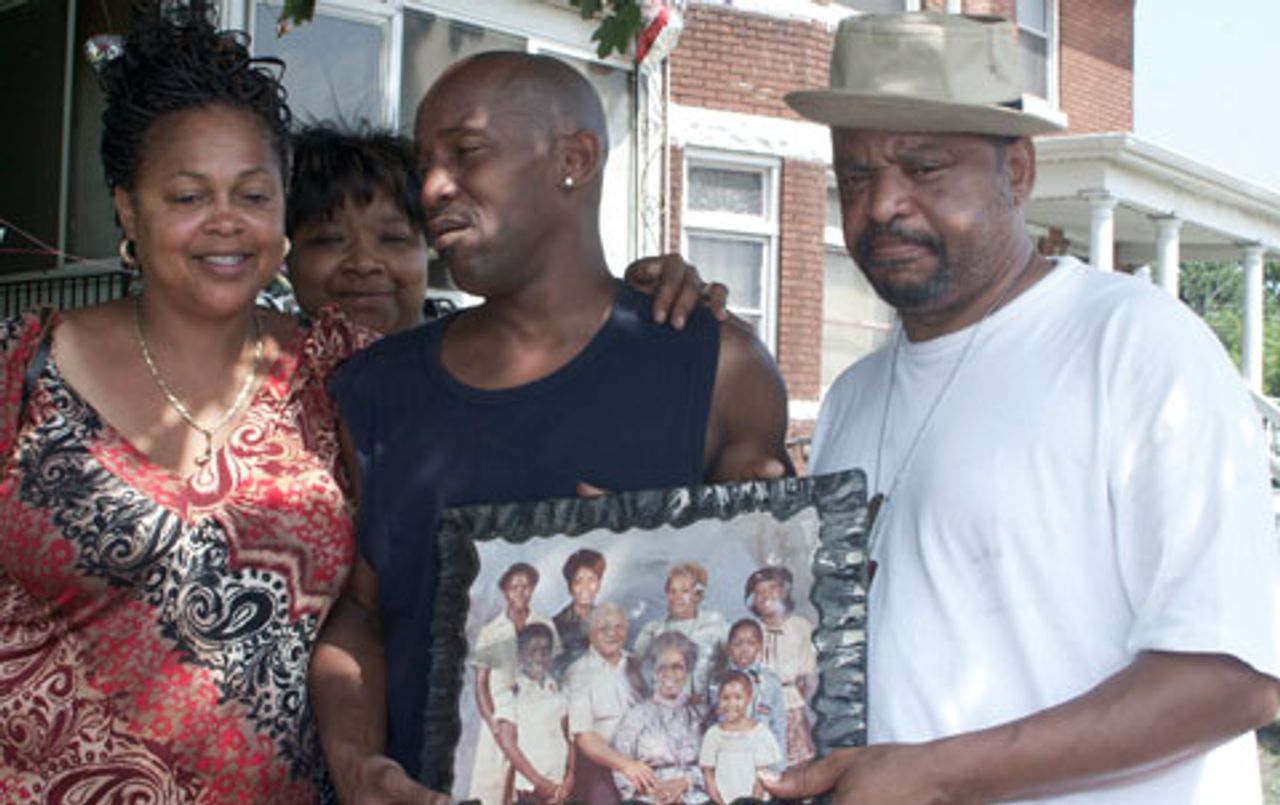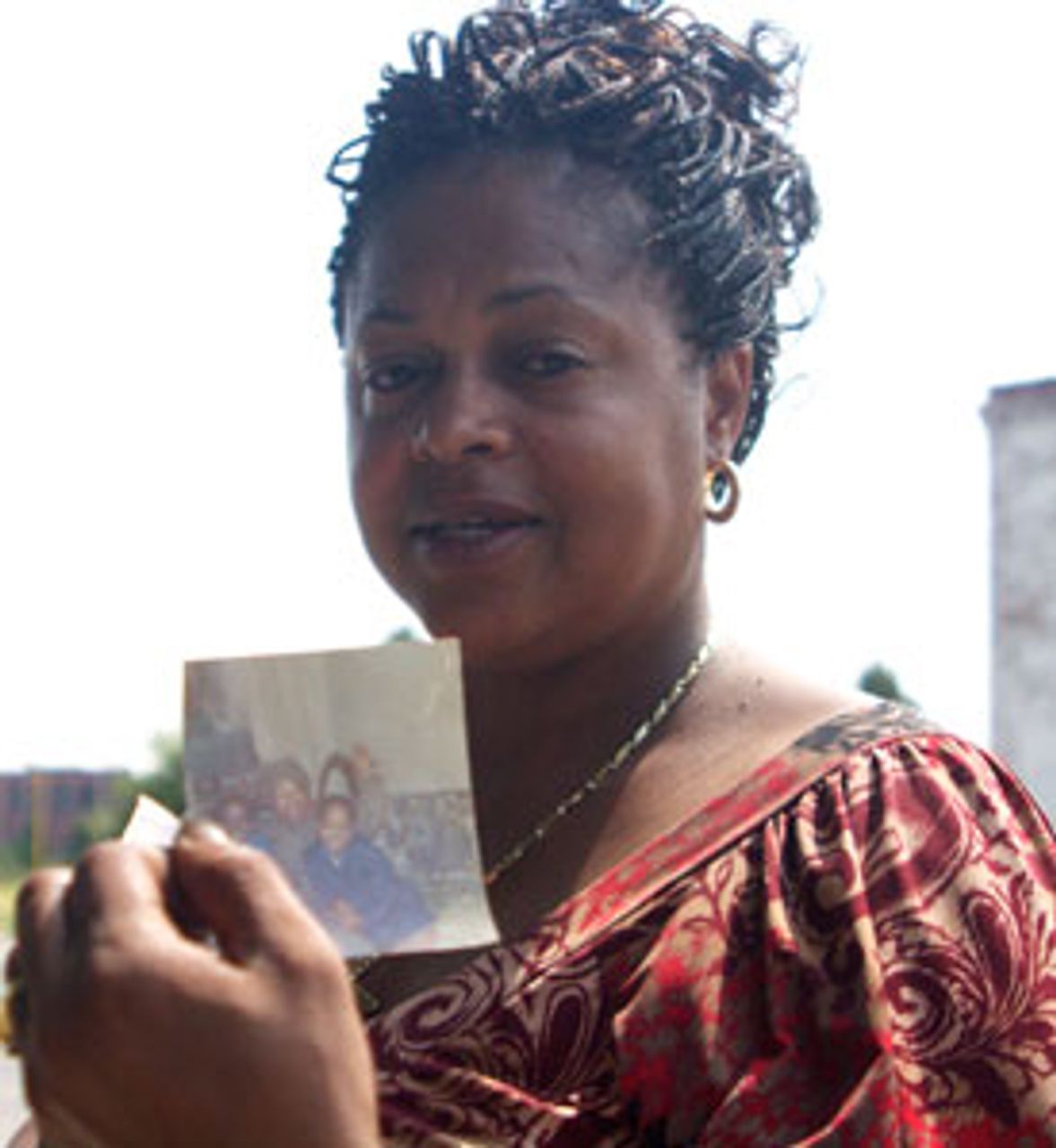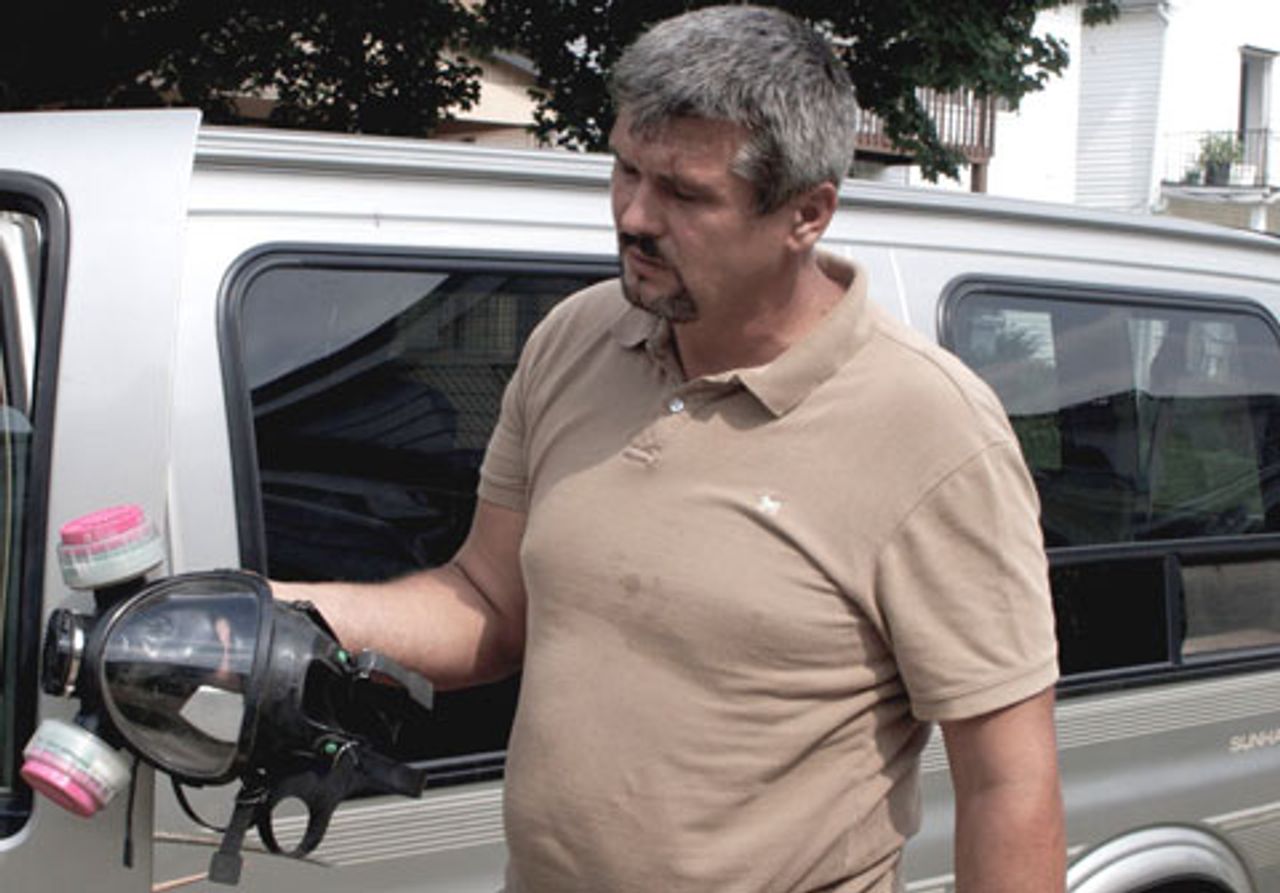Separate fires tore through two Detroit homes early Thursday morning, leaving one elderly woman dead and two children hospitalized.
The first fire, on the city’s near west side, near Linwood and Hudson, started around 4:30 a.m. and led to the death of 95-year-old Viola Dickson.
Firefighters were forced to cut a hole in the side of Dickinson’s house, which was cluttered and unmaintained, in an attempt to rescue her. By the time they got inside, however, it was too late to save her.
 Mamie Moore, Viola’s granddaughter, and Michael Waters (center), her grandson, hold their grandmother's portrait
Mamie Moore, Viola’s granddaughter, and Michael Waters (center), her grandson, hold their grandmother's portraitViola’s family spent Thursday afternoon going through the boxes of photos and other possessions that she left behind. Michael Waters, Viola’s oldest grandson, said she had four children, all of whom she outlived. “She had thirty grandchildren, nearly seventy great-grandchildren, over one hundred great-great grandchildren,” he said.
Mamie Moore, Viola’s granddaughter, said that she loved taking pictures, and that she photographed all the main events of her large family’s life.
 Mamie Moore holds up a picture of her
Mamie Moore holds up a picture of hergrandmother, Viola Dickinson
Viola was born in Canada and grew up in Detroit during the Great Depression. She was a seamstress by trade, and loved her work. In the 1960s she owned a sewing store on Linwood. As well, Viola taught sewing classes at St. Leo’s church, a few blocks from her home.
After her store on Linwood closed, Viola worked from her home, doing work for friends and neighbors, her family said. She also worked as a furrier and as a seamstress at Greektown Casino.
Viola had lived in the house for over 37 years. Despite her age, she managed to leave the house every day, and was frequently visited by family members. Her grandchildren and great-grandchildren would often bring her food on these visits.
Firefighters told Viola’s family that electrical problems likely caused the fire. The house, built in the early part of the last century, was in need of renovations, which were difficult to pay for on her social security income.
Viola’s home was one of the few remaining on the block. Houses around hers have either burned down or been abandoned, and then subsequently demolished—leaving open fields nearby.
The second fire occurred at 6 a.m. in southwest Detroit, near the intersection of Dennison and Trenton. The blaze trapped eight-year-old Tahanne Shohatee inside the house, but she was rescued by her neighbor, Liviu Talos.
Talos, a contractor, said he heard children crying early in the morning, and ran over to find the family outside their burning house. But they were unable to get through the back door in order to rescue Tahanne, who was trapped inside.
Talos, upon realizing he would not be able to get through the back door, got a baseball bat and broke open the side window. “I tried to get into the window twice, but the thick smoke knocked me back,” Talos told the World Socialist Web Site. After two attempts, he took a construction respirator from his car, put it on, and jumped through the window.
 Liviu Talos shows the respirator he used to rescue Tahanne Shohatee
Liviu Talos shows the respirator he used to rescue Tahanne Shohatee“I couldn’t see anything around me; the smoke was so thick. Even with the respirator I could hardly breathe. I reached out and felt Tahanne’s leg, slung her over my shoulder, and headed for the window.” After he reached the window, he passed the girl into the hands of her family and hurled himself out of the burning house. “I was on the ground hyperventilating for at least a minute after I got out,” he said.
Talos said he was a Romanian, and that the family was Lebanese. “Ethnicity doesn’t mean anything. I knew another human being was on the other side of that wall, and I knew I could never live with myself if I didn’t do something.”
Neighbors said that faulty wiring was most likely to blame for the fire. The home did not have central air, and two in-window air conditioning units were plugged into the electrical outlets in the home, which also dates from the early 20th century.
Tahanne remains in critical condition after smoke inhalation. Maha Shohatee, 7, was also taken to a local hospital for treatment, but the other children, Kahlid, 6, Kalood, 3, and Lafif, three months, were unharmed.
Anyone who takes even a casual look at the neighborhoods where these fires took place will know they were not simply “accidents.” On almost every block, there is at least one burnt-out house. Whole parts of the neighborhoods have been knocked down, leaving some blocks with one or two houses on them, often scarred by fires.
These fires are the result of the systematic impoverishment of Detroit, which has gone hand in hand with the destruction of the auto industry. The economic mainstays of southwest Detroit, the Cadillac Assembly and Fleetwood Fisher Body plants, were closed in 1987, wiping out at least 6,000 jobs, and leading to the protracted decline of the area.
Detroit has a real unemployment rate of nearly fifty percent, and many of the remaining jobs are poorly paid, leaving residents barely able to meet their bills, let alone carry out the desperately needed home repairs or install proper heating/cooling and electrical systems.
As a result of the poverty and unemployment, many Detroit residents face the possibility every day of injury or death from fires.
